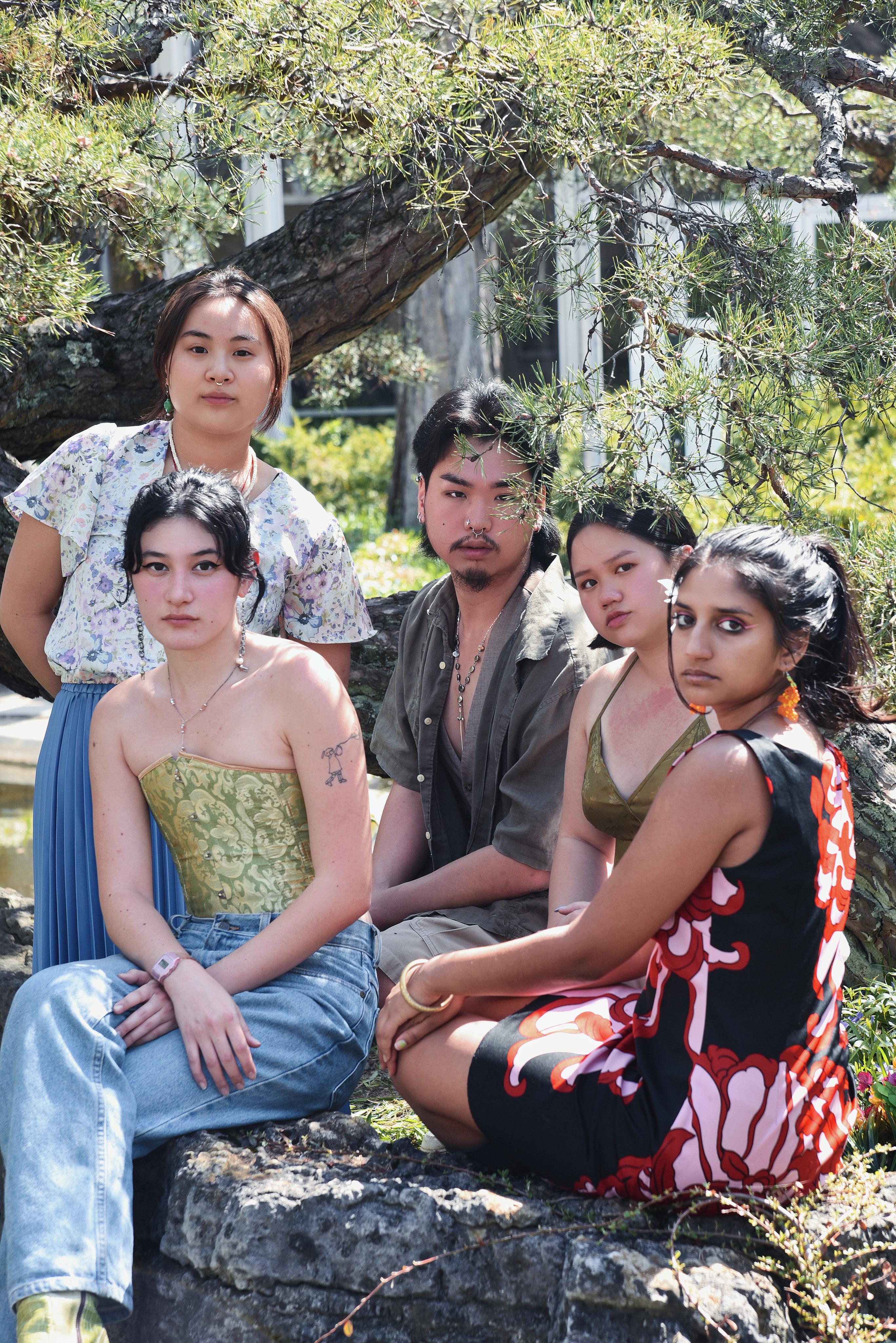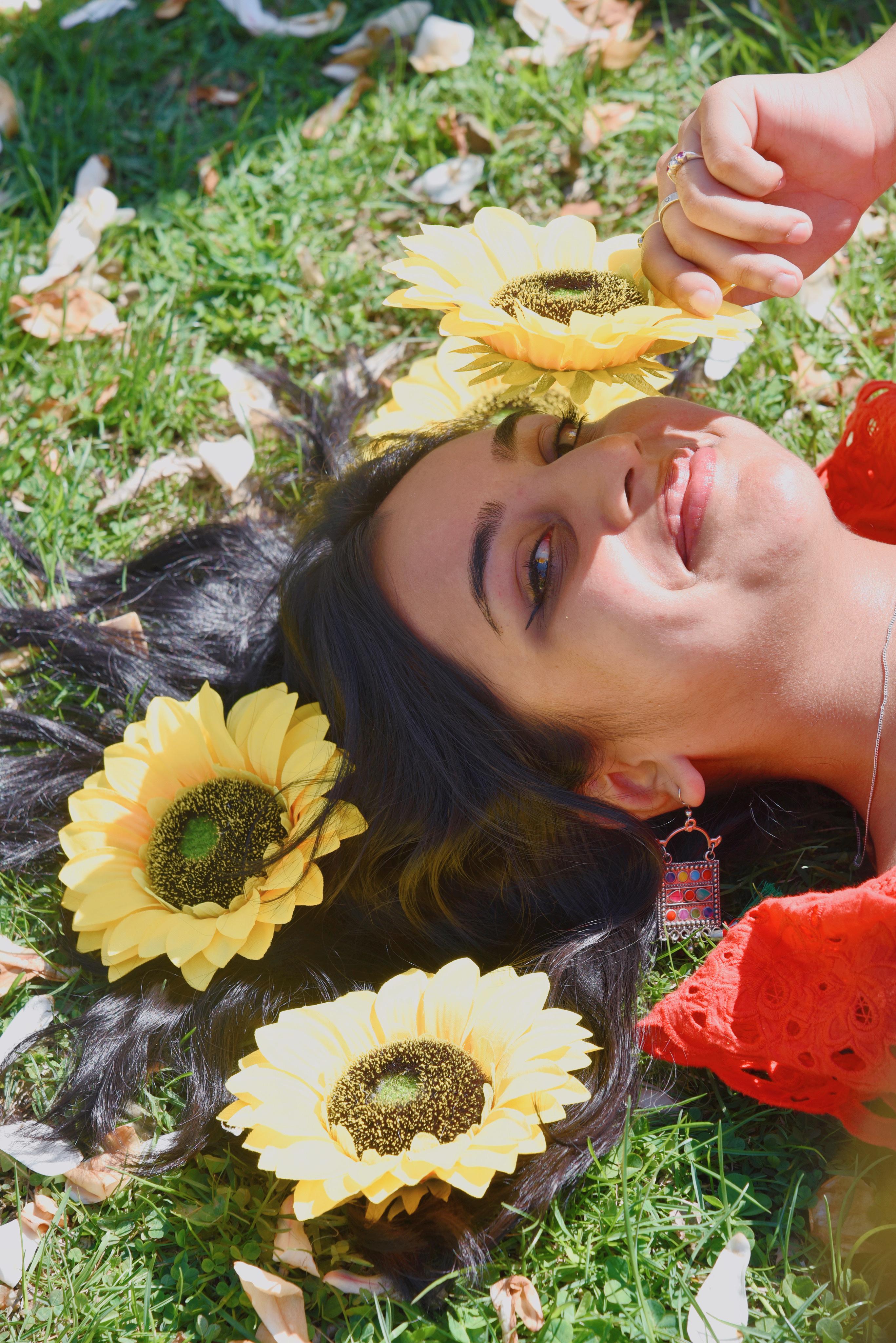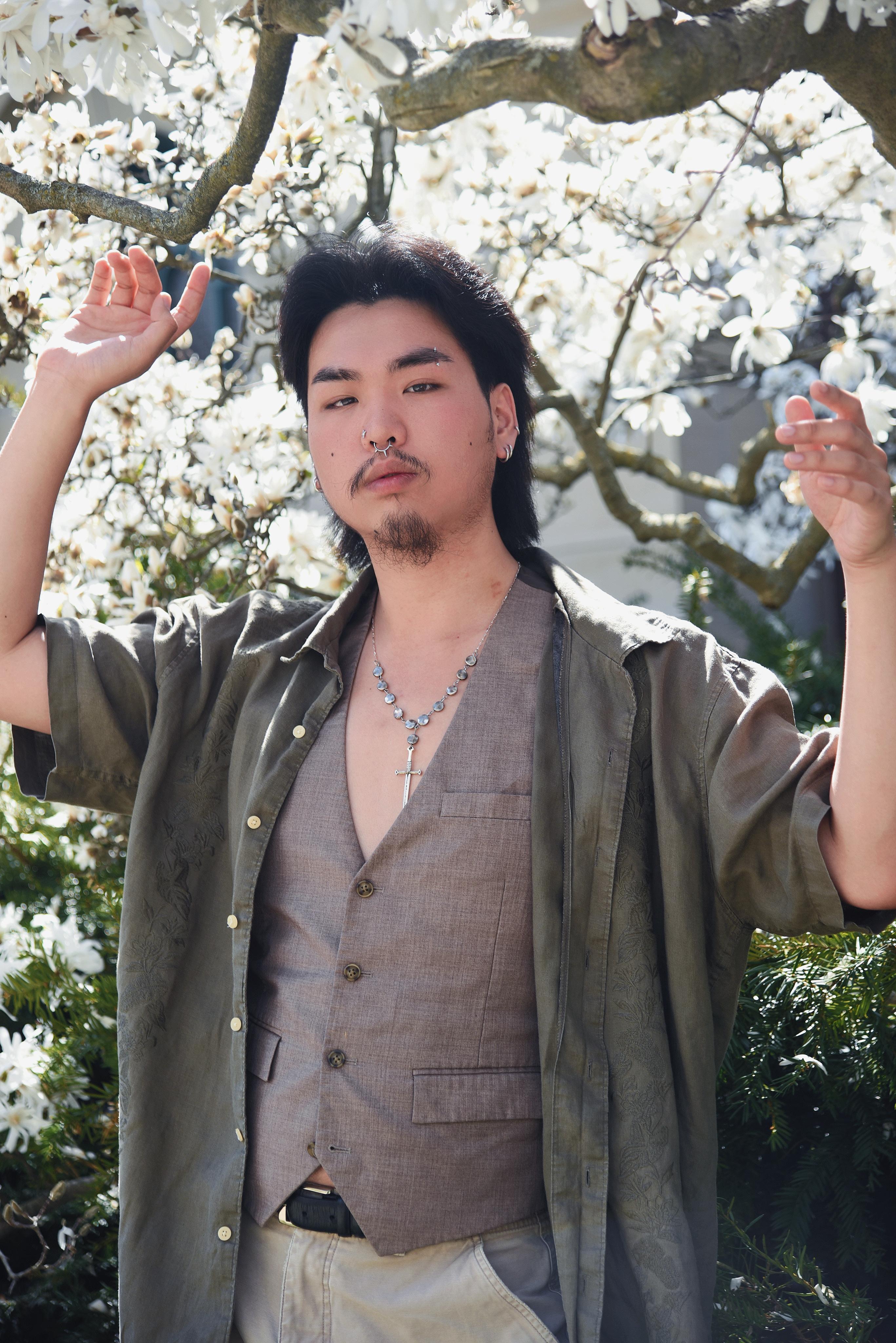BIPOC LENSES



I am in awe that this is the final issue of BIPOC Lenses. It feels amazing not only to have produced five issues, but to feel like, with each issue, I have grown more confident in the magazine's design and the overall management and communication with writers and models. Readers and contributors were responsive to the magazine, the we are doing, and the stories we are telling. People were excited to contribute to every issue model and showcase their work! We showcased a number of wonderful artists, writers, and photographers this year and I hope to continue to find new people to submit. Next year, as a junior, my priority will be to create a team to preserve the legacy of BIPOC Lenses after I graduate. I look forward to bringing in more people to help with the issue and share their passions and creativity. In future issues, I hope to include more students with different backgrounds because we’ve only scratched the surface of heritage and culture at Oberlin. The goal of BIPOC remains to be a space that showcases all POC and I welcome ideas on what we should cover or feature. I amincredibly grateful to all the writers, artists, photographers, and treasurer (Arya, I adore you) who worked to make this year and these issues possible. And so as we sign off for Spring 23, we hope you enjoy this wonderful issue celebrating spring, featuring beautiful flowers and people. Have a great summer and we'll see you in the Fall.

Editor-In-Chief
Nikki Keating
Photographer
Serafina Yan
@serafina luvs cats
Treasurer
Arya Menon
Writers Joel Tang Sayanth
Artists
Sherry Miao
Dina Nouaime
Sofía Chen
Models
Ethan Guok
Arya Menon
Anokha Venugopal
Mai Hoang
Sarah Ma
Maya Fahrer


This photo shoot is dedicated to highlighting and creating space to celebrate Asian heritage at Oberlin. This issue is being released in preparation for Asian Heritage Month, celebrated in May (When we will not be on campus). Each Model within these pages are featured in Oberlin, showcasing the flowers of Spring and the warm weather we’ve been experiencing. This issue and photoshoot represents only a fraction of Asian heritage in the world or at Oberlin. Rather this photoshoot is dedicated to showcasing some of the many beautiful places students can have heritage from.




Racial equity burns a bright sun among that veiled haze of shadowed aggression, we speak of a time where living in harmony is as foreign as the foods we pretend to eat, and yet those violent attacks upon members of our communities are considered normal and fine.
i toe the line between what is known and what becomes the unknown, to stay on one side homogenous but on the other side heterogeneous, but lately it seems no one can tell me what to do if i live in both? in the spirit of growth will they allow me to claim descent or will they resent me?
i couldn’t speak those languages spoken by my ancestors, but i never noticed i was different until society told me so. i couldn’t eat vital dishes from my parents’ homelands either, and for that did my family consider me a broken toy gizmo?
i never cried for help when my bullies came for me, because we both knew the system wanted to watch me burn, burn like a cross. and i never wailed when my plea to the world fell on deaf ears, since the fists that slammed my world radiant made me patient but lost.
treating my wounds and pain in silence, since their complacent word was favored over mine, being thrown out of naive innocence to endure the stresses, of being too brown, too exotic, too wrong, to shine.
I never knew so much hatred existed in a society built upon the freedom to choose better lives than previous generations before, but as it turns out living multiracial privies me to being an unlabeled eyesore, and in this gilded idea we call safety and security, I’ve found myself only a pawn to the habits of the many.
day by day I deal with the effects of the violent insanity, and equality feels nothing more than a slip of paper upon a myth of equity,
Hidden far away in a dungeon under lock and key, So for when, I ask, will I ever breathe?

“If I have a time machine, I want to go back to when my mom was twenty.”
By reshooting mom’s old photos with the daughter, I would like to show the Chinese women’s images of two ages through kinship.
Approaching this topic through the film as an “outdated” photography method, I want to open discourse between two ages and generations. This project enabled me to have a deeper understanding of my mom. The arrangement of the photo album comes from my memory of my family photo album
Approaching this topic through the graphy ourse ations. have a y mom. to ory of












It’s weird to say that I was bilingual for two years of my life, but that’s exactly what happened At age 4 I could sing Korean Bible songs by heart and complete assigned grammar worksheets. At age 7 I had forgotten everything but the numbers 1-6, a few food items, and greetings My level of fluency has stayed the same since.
My relatives from the post-Korean war generation all have retained Korean at various levels, but my parents made sure to teach me, from buying Korean books to enrolling me in a predominately Korean preschool. Shortly after finishing preschool however, my family moved from to a 91% white town, and there were bigger problems to worry about than Korean When I first entered kindergarten, my parents thought I was selectively mute and almost held me back a grade because I literally didn’t speak to anyone at school for the first three months One time I couldn’t tell the teacher that I needed to go to the bathroom, had to get emergency clothes, and then needed emergency clothes for the emergency clothes because I was still too scared to ask Something stopped me from talking, from telling adults that I needed something and to other kids that I wanted to be their friend. Everytime I said something, I had to ask my mom if I was correct before one day she said “You know you don’t always have to check with me before

and I'm sorryABOVE: Me (left) at an ancient relic located near Namsan Tower in Seoul, South Korea, June 2011. I was 7 years old and just finished second grade
My Korean died a quick and uneventful death, my sound house(1) resembling an abandoned shed more than an actual house with the tools swiftly eroding away But despite my inability to speak, I didn’t mind I still enjoyed eating bulgogi, and going to family reunions in Seoul. I especially learned to love reading and writing in school – as I grew up, I experimented with flash fiction and poetry that will thankfully remain in some random folder in the deep deep abyss of Google Drive never to be seen again
One morning in sixth grade, my grandpa who lived in South Korea was hospitalized for a fall. My mom and her two brothers scheduled a time to meet, just once initially, and then maybe a check in after he got out of the hospital. One visit turned into two, then three, and then into a total of four years of on and off visits an ocean away Meanwhile, his condition deteriorated from fall complications to Parkinson’s and dementia As the oldest of three kids, I was put in charge, in my eyes, almost as the unofficial second mom
My own mom left at seemingly random times - ranging from Christmas to summer vacation to the time of an all-state chorus concert I was in Even though she was only gone for about 8-10 days every couple of months, it was difficult for me to adjust to. I felt a lot of emotions – fear about what would happen if she died in a plane crash, anxiety about how messy and disorganized I felt, jealousy of other kids who had two parents in their households at all times. But most of all, I was betrayed, by both my mom for leaving and my grandpa for forgetting. Eventually, I learned how to take care of myself and my siblings and work independently, in some way or another I made lunches for field trips, did my homework without asking for help, and remembered my sister’s after school extracurriculars so that my dad wouldn’t forget.
My grandpa died peacefully and alone in March 2018 The first memorial service was in Seoul, South Korea, the second would be in Iowa City, Iowa. While my mom flew out to South Korea to visit grandpa one last time, people from the 91% white town my family had once felt so alienated from raised enough money to hire a snow plow to clear out our house from a freak snowstorm so that we all had the chance to make it to Iowa City in time for the second memorial service and burial
A lot of things have changed since. I matured faster than others my age – sometimes I still refer to my younger siblings as “the kids” instead of as my actual siblings, even though there’s only a 3 and 7 year age gap respectively. When I was away from my family for a long time, whether it be a 6 week summer camp or college, I have never been significantly homesick But most importantly, it made me revisit my family’s collective sound houses and the tools we’ve had abandoned for so long in pursuit of things – education, societal pressure, assimilation Watching my mom with my grandpa in the hospital bed over FaceTime one Christmas Eve was almost a visualization of how quickly the language was dying in not only me, but my own family
Korean has been in slow decline within my family for a while. My great-great grandparents are the last generation to learn the language fully from childhood to adulthood When my great-grandpa was 10 years
old, Japan annexed Korea and mandated Japanese as the primary language My grandparents and most of their siblings lived under the occupation until middle school/high school, and finally learned Korean after World War
II ended A couple years later however, my maternal relatives had to make the difficult decision to leave their village in what’s now North Korea, or stay behind and hope that the war would pass. Those who didn’t leave were never seen or heard from again, and the ones who did leave had to do so in dramatic fashion, such as rowing down the Han River for five miles or jumping out of a moving train. My grandpa, his siblings, and other family members who moved to the US for college and grad school ultimately settled around the Midwestern area, doing their best to provide for their kids and to fit in with American culture – I recall a story about my other grandpa who worked for over 40 years to try and remove his accent in English, to no avail
We have all forgotten a significant amount of Korean, and the language has effectively died within our generation. I was just one of many nails in the coffin. I’ve since moved onto focusing on school, studying for the ACT, getting into college, and now looking for a potential career focused on writing – in Standard American English. I’ve given up on the Korean language a long time ago. It is a language I love, but is something that will never be whole for me and now, nothing more than a language of regret
References
Lippi-Green, Rosina 2012 Lippi-Green, Rosina “The Sound House ” English with an Accent: Language, Ideology, and Discrimination in the United States,. 2nd ed. Milton Park: Routledge.
Author’s note: This was originally written for my Writing and Language Diversity class, in which we were to write a linguistic autobiography about ourselves. The title, in English, is “I don’t speak Korean and I’m sorry,” and it was run through Google Translate The Korean part, “한국어 못해요” , is probably the most important Korean phrase I need in order to communicate with other relatives and Korean people, yet one I can never remember I’m publishing this under my Korean name, the only thing I can write out in the language without assistance, in honor of what has been and what might have been.
This AAPI month, I am honoring the family members who I never got to meet – my relatives who were separated by the Korean War, my grandma who died two months before I was born, my great-uncle who died in elementary school. Their memories and stories have died in conjunction with my language loss. I’m sorry.


Beijing’s green space was, and remains, limited In the summer of 2011, the heat was stifling It baked down upon blocks and blocks of concrete, glass, and metal It ricocheted It emanated It was unrelenting Yet moments of relief could be found within the high walls of the Forbidden City. 姥爷 would walk alongside my ten year old self, his hands clutched firmly behind his back, leading me down a grey brick-lined path adorned with willow tresses. The tresses flowed in the occasional gasping breeze, causing them to beckon us forward Walk far enough and we’d eventually come across a vendor, before whom sprawled an assortment of mini red fishing poles I’d pick one, clutching the plastic handle in my ten year old hand, the other hand holding an immense mound of raw dough- bait for the goldfish And so it would begin: pinch a piece of dough between the thumb and index finger. Roll it into a ball. Spear it onto the metal hook, careful to not snag tender skin Drop hook into a deep basin of cool water swirling with red, orange, yellow patterned scaly bodies Feel a tug Pull a squiggling goldfish through the rippling water’s surface, up through the summer air, into the questionable safety of a water-filled plastic bag Like a shampoo ad, rinse and repeat, until bag becomes just like the basin of water below- swirling with red, orange, yellow patterned scaly bodies. And so began the treacherous bus journey back home- one hand holding 姥爷’s, the other determined to ensure the safety of my new goldfish friends And what a sight that was




Assistant Professor of Psychology Danielle Godon-Decoteau's research focuses on racism, culture, and mental health within Asian American Communities This interview serves as a way to examine her work's complexities and understand the impact of Racial trauma on POC identity
NK: So, how long have you been working at Oberlin?
GD: This is a new job for me. I started in the fall of 2022.
NK: Awesome. And were you teaching beforehand in a different college, or is this the first school you've taught at?
GD: I was a visiting professor at Mount Holyoke College in MA for the four years before this.
NK: Oh, gotcha, and you've always been a professor in psychology, right?
GD: Yep
NK: Did you study psychology as in undergrad?
GD: No, but I did in graduate school. My Ph.D. is in clinical psychology, but my undergraduate degree is in business administration. I had a bit of a “quarter-life crisis,” I call it.
(Laughs)
After a couple of years of working in corporate finance and accounting, I decided to return to school. And if I was going to uproot my career at that point, I wanted to study what I care about and love, which is psychology.
NK: Wow, so you've always loved psychology?
GD: Yes. My friends in college used to make fun of me for majoring in business yet my heart was in psychology.
NK: And were you always into clinical psychology?
GD: I didn't know what area I was interested in at first. But I would make observations about my experiences in the world, and a lot of times, there were discrepancies between how I was perceived and how I felt. So I used to think about people a lot. I would see people and say, "I just wanna know their stories " Because people are so complex and there's so much to know I guess that was the start of me gravitating toward clinical psychology
NK: And that leads me to my next question about your research Specifically, you're in the area of Asian American experience and mental health I first really want to know how you got into this type of research
GD: I did a terminal master's program at Mount Holyoke because my background was in business administration so I needed to fill in the missing educational pieces to be able to apply to doctoral pro
-grams in psychology. I went into the program with an interest in race and culture that was broadly defined. My advisor was interested in intersections between race and culture and trauma at the time, and I was like, "I could be interested in that too " And one day, my advisor advised me to take a class that was being offered on the psychology of adoption
NK: Oh wow, that sounds interesting
GD: Well, initially I didn’t really have an interest in it. But once the class started, I was just completely into it. I was reading academic sources for the first time that were helping me articulate things that I felt but didn't know how to say, being an adoptee myself. And I just knew that was the area I wanted to get into. So my master's thesis focused on Korean transracial adoptees’ sense of belonging and a sense of exclusion. When I was working on that master's thesis, I was also doing literature reviews and simultaneously applying to clinical psychology doctoral programs
NK: Impressive!
GD: Thank you! That's how I found my mentor She had written an article that was a primary article for my thesis. So I reached out to find out if she was accepting students the following year, and that was that.
NK: That's so cool. And so, what were your findings in your research? How did you go about the process of collecting data?
GD: When I started working with my mentor in my doctoral program, I decided to broaden my scope and not just focus on Asian transracial adoptees, but Asian Americans in general And the construct that I was very interested in was internalized racism
NK: Mm That is the unconscious acceptance of the racial hierarchy in America, right? It consistently places white people at the top of the hierarchy, with POC below.
GD: Right. So for my dissertation, I looked at how internalized racism affects the relationship between racism-related stress and mental health symptoms in Asian Americans. The first part of that process was to define what I meant by internalized racism in
the first place.
NK: Interesting.
GD: Literature on internalized racism in Asian Americans has grown quite a bit within the past five years, but at the time, it was sparse So I did a structural equation modeling analysis which allowed me to use multiple measures that I theorized were different parts of internalized racism, to construct a model that said, okay, this is what it looks like in the Asian American sample that I have and how it relates to racism-related stress and mental health.
NK: So what were the results?
GD: What I found was that internalized racism in Asian Americans has two manifestations. One is internalized racial and ethnic inferiority and the other is internalized meritocracy. The first is what usually comes to mind when we think about the concept of internalized racism.
NK: Devaluing oneself and wanting distance from others within one's group
GD: Right, as well as valuing whiteness, valuing white American beauty standards, cultural norms, and things like that. In my study, I found that there's a relationship between racism-related stress and mental health symptoms, in part, because of that aspect of internalized racism. In other words, the higher the racism-related stress, the more racial and ethnic inferiority Asian Americans experience, which is related to higher symptoms of depression, stress, and anxiety. But, my study also found that that relationship could be interrupted by pushing back on the other facet of internalized racism.
NK: Really?
GD: I called it "internalized meritocracy " The kind of idea that race and racism don't matter anymore and that Asian Americans should keep our heads down and just work really hard, and things will be fine as long as we try hard enough. But if we can decrease that piece of internalized racism, we can disrupt the other relationships too.
NK: It helps disrupt the effect racism has on Asian Americans’ mental health.
GD: Right. Because racism-related stress is going to happen. We live in a society with racism. So I want to focus on when we experience racism, how we prevent it from affecting mental health in negative ways. Now, I am thinking that developing racial consciousness in Asian Americans, at both individual and collective levels, is important I think that’s the direction I want to take my research in next How might we develop racial consciousness and transmit that collective understanding across generations? Not just to our children but also to our elders.
NK: Wow, that is amazing. And I know you are currently teaching "Advanced Methods in Racism and Asian American Mental Health PSYC 310.Do you talk about this research in your class? GD: So, in my advanced methods course, we do talk about racism and its effects on Asian American mental health. And then, we focus on research methods to investigate those effects. But I also teach a seminar course, Asian American Psychology, that covers a broader perspective–racism and mental health are a piece of it and we also talk a lot about culture, family, and the diversity within “Asian Americans.” I say that in air quotes because AsianAmerican is such a broad term. So we talk about general trends within the group, and then we talk about Asian Americans whose experiences aren't centered around what it means to be "Asian American." What are their experiences like? For example, Asian adoptees, multiracial Asian Americans, LGTBQ Asian Americans, Asian American women, refugee experiences, and the list goes on. There are many more ways in which Asian Americans are diverse. That's what we have time to cover, in that semester, though.
NK: Gotcha
GD: The goal of that class is really to be able to understand Asian American individuals at multiple levels. Levels such as individual, family, and community levels, and where Asian Americans fit in at an institutional level as well.
NK: And it's so important.
GD: Exactly
NK: Thank you so much for your time.
Course Number: 315
Course Number: 214
Fall



When I first moved here A stranger In an unfamiliar Social sphere
I was terrified Of being different
I changed the way I spoke The way I behaved Hiding, under a personality cloak
I'd pick up the phone, A call from back "home" My colours would change yet again
As I grew up, I swung to and fro Along the spectrum
I claim to belong to here and to there And then there are those times, I feel from both so distant As if I would never fit in anywhere.
Change seldom comes when we desire it
Soon I couldn't remember Which color I once called my own
I've forgotten how to tell, Whether i am home
What I didn't realise was Much like the cold blooded creature
The colors are all sampled Only the change is my own.





BIPOC Lenses is an Oberlin Student-run magazine that unites many different POC organizations under one publication to showcase the beauty, talent, and art thats students of color create on campus.

